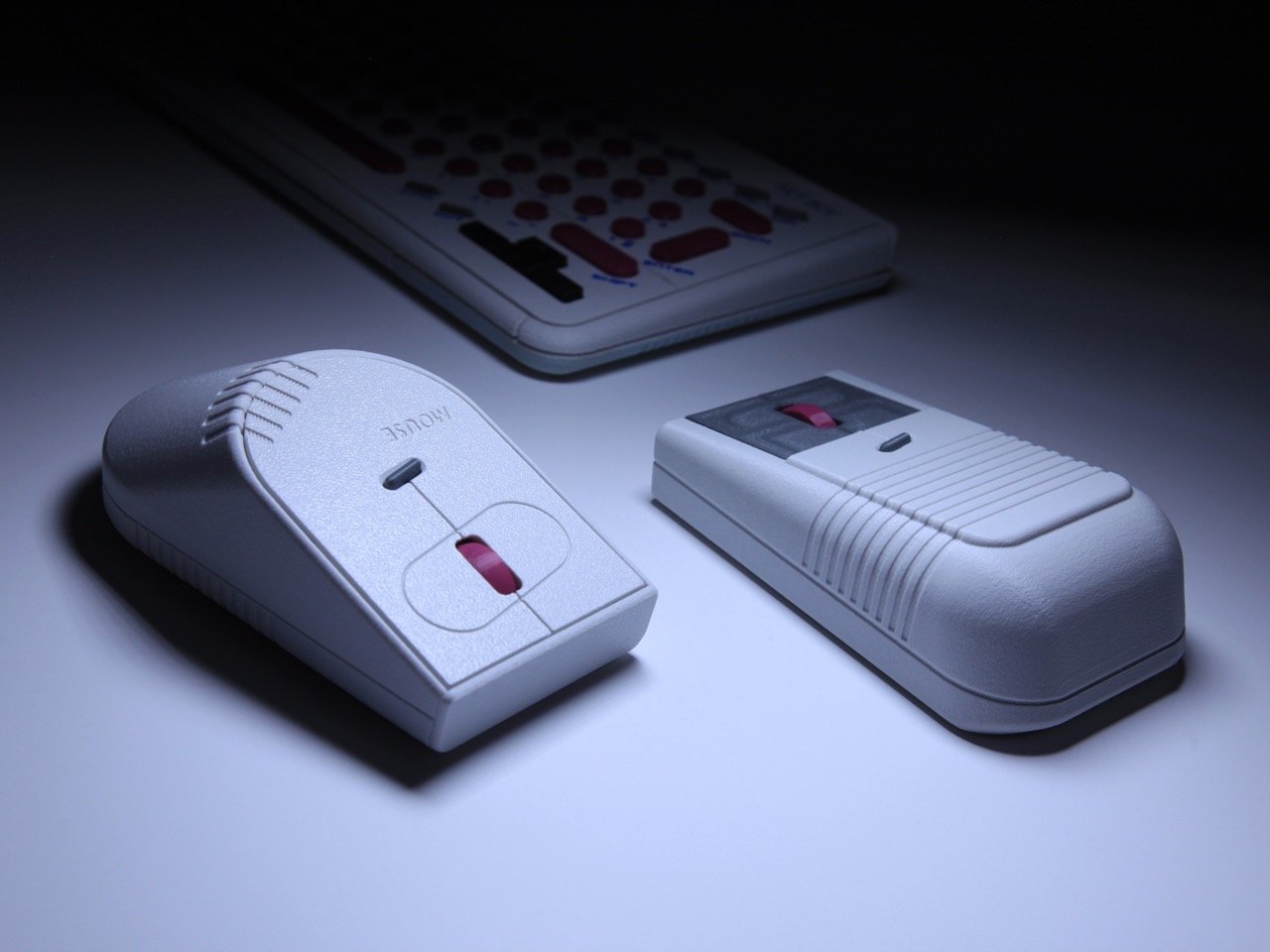Remembering the days when the only backlit screen was the one powered by a mountain of AA batteries, a time of pixelated glory and monochromatic dominance. We’ve come a long way since then, but the cultural icon that is the original Game Boy has lingered in our collective consciousness, influencing product designs even today, a solid 36 years after its original debut in 1989. It’s a device that demands reverence, and for a tech designer like TLTB, that reverence manifested itself in a magnificent, 3D printed keyboard earlier this year. But a keyboard, no matter how nostalgic, is an incomplete setup. The pixelated journey required a worthy companion. It needed a mouse.
And so, we get not one but two Game Boy-inspired mice from TLTB. This project is a beautiful marriage of retro aesthetics and modern functionality, a gizmo that looks like it belongs in the hands of a 90s kid but functions with the wireless precision of a contemporary peripheral. Both mice are built using the Bambu Lab wireless mouse kit, a fantastic foundation that provides the necessary electronics for a fully functional peripheral. But it’s TLTB’s unique designs that elevate this project from a simple kit-build into a true work of art. These aren’t just mice; they are tangible pieces of gaming history, lovingly crafted and ready to take their place on your desk. The sheer amount of design iterations and clever solutions that went into these mice are a testament to the passion behind the project.
Designer: The Lesser The Better
The first mouse originally started as a Game Boy-shaped slab, but with buttons instead of a screen (you can see it at the 2:50 mark on the video), but for obvious reasons, that wasn’t the most ergonomic. TLTB added a kink to the shape, giving it more volume while making it resemble the mice of the times (like the Apple and Atari mice), but the mouse had a very distinct ‘owl’ shape, with the 2 buttons and the scroll wheel looking like eyes and a beak. This led to TLTB experimenting with more unique shapes, resulting in the mouse we see here. The design follows more traditional shapes, but still retains the Game Boy aesthetic thanks to the use of simple geometry over wild organic curves, and that color scheme. Even the deliberate implementation of spilt lines gives the mouse a distinct retro Nintendo vibe, while allowing the buttons to bend without necessarily being separate parts.
Its ergonomic truncated-oval design matches the keyboard but also has enough ergonomics to really be a genuinely comfortable mouse in-hand. For the most part, it’s perfectly bilaterally symmetric, which means the mouse is, for all intents and purposes, ambidextrous. The build process for this particular mouse is a thoughtful balance of the provided Bambu Lab components and the user-printed shell. The kit includes the main PCB with non-clicky switches, a USB dongle for 2.4G wireless connectivity, and the necessary battery and screws. TLTB’s custom design required a clever solution for the button plate’s cuts, as a corner-based design would have been too stiff. The lines were moved to the top surface, mirroring the aesthetic of the companion keyboard. The designer also recommends using a Scotch pad to gently sand the glossy, printer-bed-textured surface of the button plate to better match the matte, fuzzy-skinned main body.
Then we have the second mouse, a bolder and more whimsical design that TLTB describes as resembling an “upside down Game Boy.” This version is less about replicating the console’s form factor and more about capturing its playful spirit. The design is blockier and more compact, a fun, almost caricature-like representation of the classic device. This design does not have the same split-line motif as the keyboard, but it fits the overall aesthetic perfectly. The build for this one is just as meticulous, with the button plate sliding into slots on the main body.
For the second mouse, the designer took a different approach to the printing process, using a “fuzzy skin” feature to give the main body a unique, textured finish. This is a brilliant move that not only adds a tactile quality to the mouse but also helps hide any minor imperfections from the 3D printing process. The design tolerances for this model were specifically adjusted to accommodate this feature, ensuring a snug fit for the button plate. The assembly follows a similar process to the first mouse, with the Bambu Lab components like the PCB, battery compartment, and mouse wheel encoder all slotting neatly into the 3D printed shell, secured with a single screw to complete the enclosure.
If you are itching to get your hands on these incredible peripherals, you’re in luck. The 3D print files for both mouse designs are available for download on Cults 3D. Do note, this is a paid download, given just the amount of time, modeling, reiterating, and engineering gone behind the scenes – but the files will be offered at a discount for a limited time. The necessary electronics, the Bambu Lab Wireless Mouse Components Kit, can be purchased directly from Bambu Lab or various other 3D printing retailers. It’s a fantastic setup that empowers you to bring this nostalgic, retro-gaming aesthetic to life with your own hands and your own 3D printer.
The post These Game Boy-inspired Mice Are The Retro Gadgets We Didn’t Know We Desperately Needed first appeared on Yanko Design.

